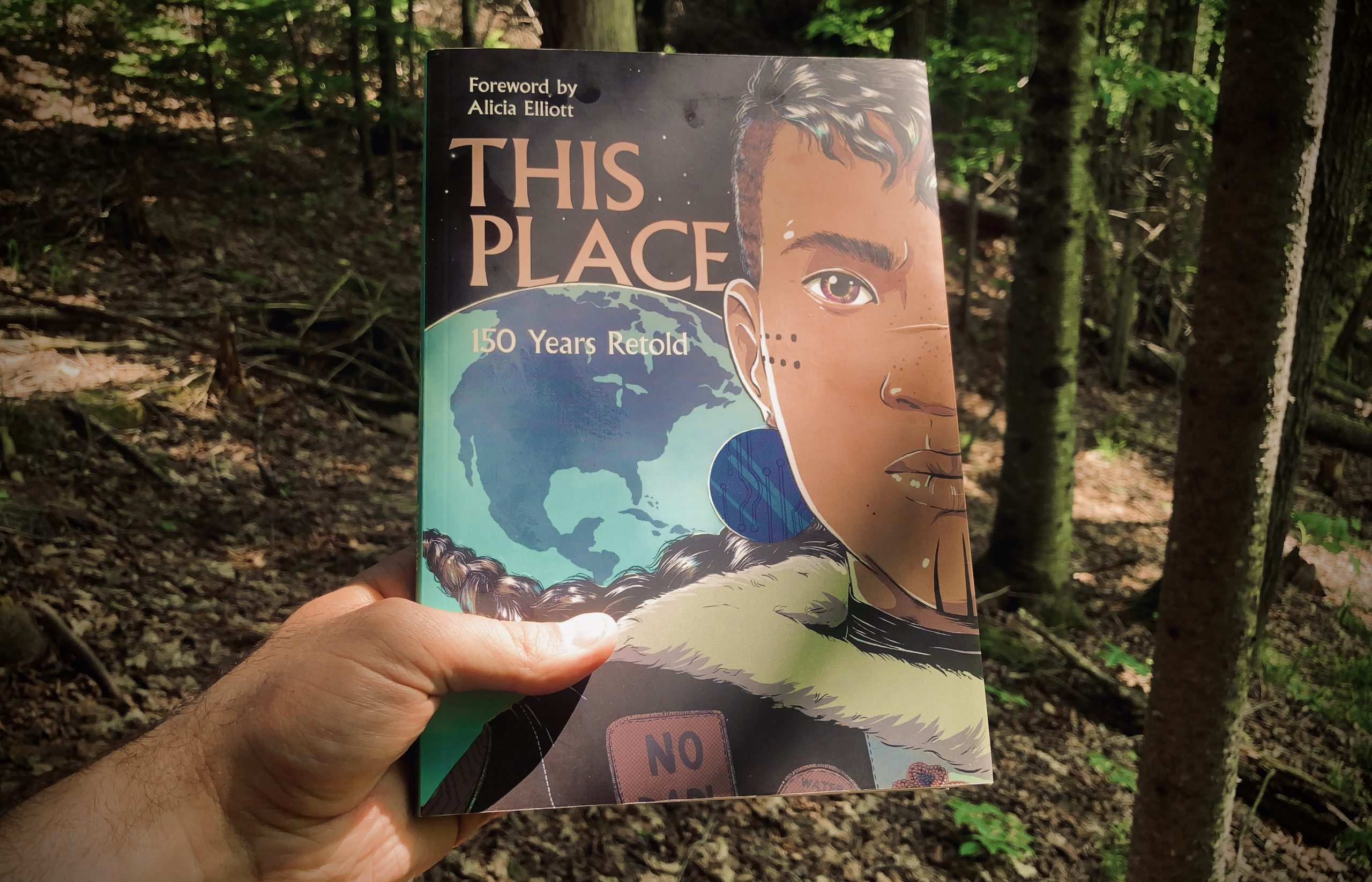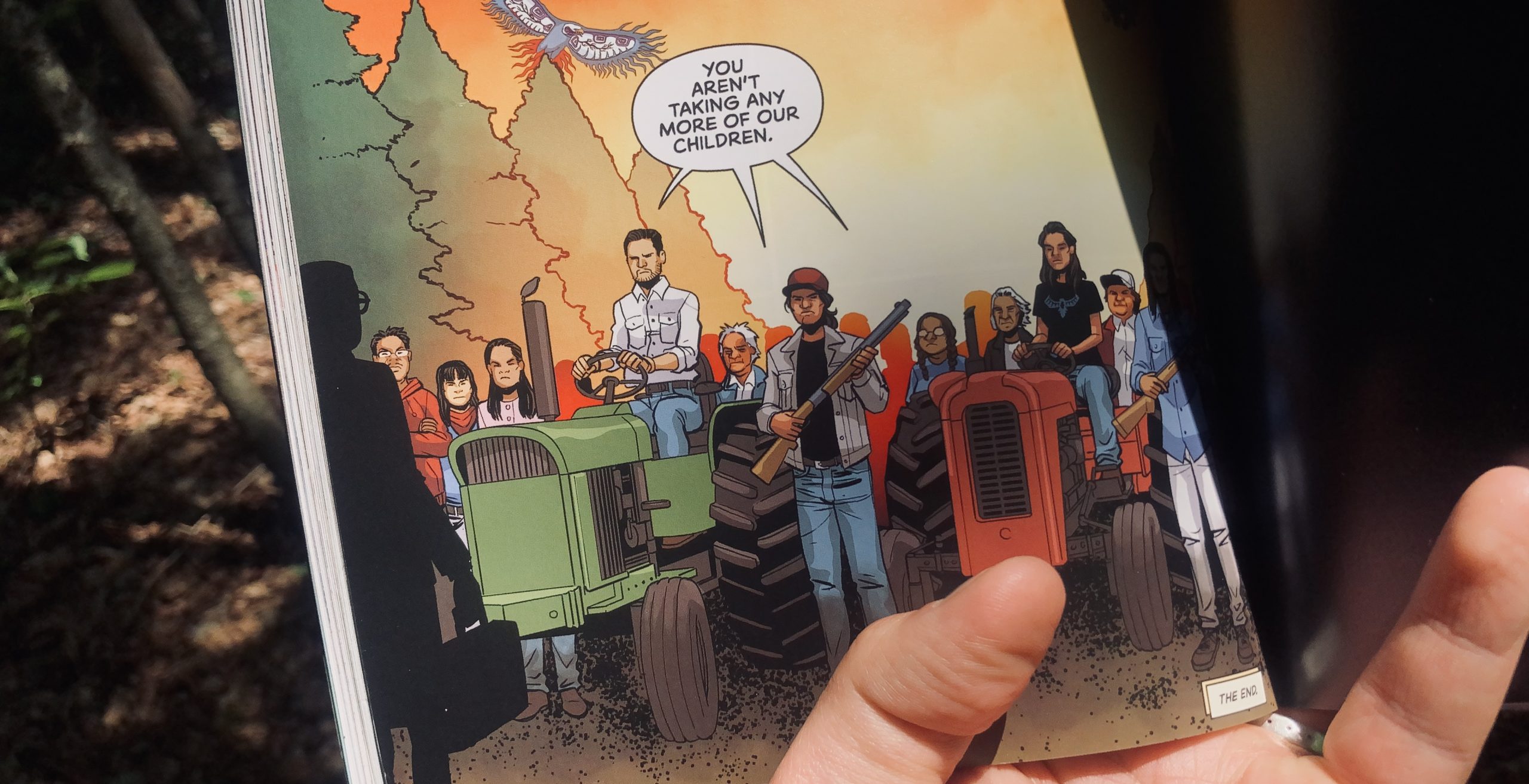By Neale Van Fleet on June 15th, 2023

Work in progress by an unknown artist at Mural.
By Neale Van Fleet on June 15th, 2023
A line in recent episode of the podcast Canadalandback about the perception of time caught my attention:
Mi’kmaq journalist and professor Trina Roache commented that First Nations people experience time differently. And it’s not a linear projection. It’s more like the past, present and future are layered upon us all at once…
It hadn’t occurred to me that different social structures could lead to time being perceived differently by different peoples, but there are even more examples. Scientific American’s 2016 article How We Make Sense of Time told the story of a native Papua-New Guinea man and how his view of time differs from the Western norm:
Danda was making just the kinds of gestures we were hoping for. As he explained the Yupno word for “yesterday,” his hand swept backward; as he mentioned “tomorrow,” it leaped forward. We all sat looking up a steep slope toward a jagged ridge, but as the light faded, we changed the camera angle, spinning around so that we and Danda faced in the opposite direction, downhill. With our backs now to the ridge, we looked over the Yupno River meandering toward the Bismarck Sea. “Let’s go over that one more time,” we suggested.
Danda obliged, again using his hands to enliven his explanation. But as we expected, his gestures had changed. As he referred to “yesterday,” he now gestured, not backward, but forward. As he explained “tomorrow,” he gestured back over his shoulder, up toward the ridge. Inconsistent as these movements may seem, Danda was not confused. His gestures expressed the Yupno way of understanding time, one in which the future is not something in front of you—it is uphill. By having interviewees change sitting positions, we were able to show that it does not matter whether the slope is in front of you, behind you, to your left or to your right. The Yupno conception of time is not anchored to the body, as the Western one is, but to the world and its contours.
There are other fascinating differences in how even more indigenous cultures experience time, such as this summary from Time Perception Among Navajo American Indians and Its Relation to Academic Success which was more concisely summarized here.
Western Perception of time:
1. Linear.
2. Strict starting and ending points.
3. As one moves across this timeline, events and milestones are passed.
4. Once an event is passed, it is complete and cannot be revisited.
5. In this perception of time, life is organized by creating a schedule.
6. Value and importance is communicated by keeping and honoring the schedule.
7. E.g. If I make plans to meet someone for lunch at 12 PM and do not show up until 12:30, then I owe that person an apology because my tardiness is offensive. I did not honor our schedule and did not value their time.
Navajo Perception of Time:
1. Circular.
2. If an event is passed or missed, then there is not as much reason for concern. The understanding is that the event will usually come back around again.
3. In this perception of time, life is organized by completing tasks or events.
4. Value and importance is communicated not by starting/arriving on time, but by staying until the interaction is over or the task is complete.
5. E.g. If I make plans to meet someone here on our reservation at noon and do not show up until 1 pm, there is usually no need for me to apologize. But, once we are talking, if I am constantly looking at my watch or suddenly announce that I need to leave, I have committed an offense. I did not allow the interaction to come to its natural completion.
I can’t help but draw some comparisons to my own experience of time as someone living with ADHD. I see time as task based, less linear and with less precise starting and ending points. Holding an exact schedule is less important to me than maintaining adequate focus, and being productive in the tasks I want to accomplish.
By Neale Van Fleet on June 14th, 2023

My favourite piece of street art at Montreal’s Mural street art festival so far is this tiny hidden sculpture 15 feet up a brick wall in an alley near the festival. I’ve been told there are many more, but have not yet been able to track down the artist.
Update: The statues are by Isaac Cordal
By Neale Van Fleet on June 14th, 2023
Over at Rogue Amoeba, we recently shipped a major update to our soundboard app Farrago. Yesterday I put up a design article on our company blog going into detail about my design process.
By Neale Van Fleet on June 13th, 2023

A paint off at the Mural street art festival. MC Baldassari vs. Jason Wasserman.
By Neale Van Fleet on June 13th, 2023

This cinéma vérité film was the sole movie directed by Barbara Loden. It is the story of a “passive, disconnected coal miner’s wife who attaches herself to a petty crook”. The film is bare, simple, and raw. It was shot for a tiny budget with a crew of four. Loden said of more polished Hollywood films:
I really hate slick pictures…. They’re too perfect to be believable. I don’t mean just in the look. I mean in the rhythm, in the cutting, the music—everything. The slicker the technique is the slicker the content becomes, until everything turns into Formica, including the people.

By Neale Van Fleet on June 12th, 2023

A collection of illustrated stories by more than 20 indigenous authors and artists telling stories from history from the perspective of those who were here when Europeans arrived.
As can be expected, many of the stories are dark. Alicia Elliot sums it up well in the foreword:
As I was reading, I thought a lot about the idea of apocalypse, or the end of the world as we know it. Indigenous writers have pointed out that, as Indigenous people, we all live in a post-apocalyptic world. The world as we knew it ended the moment colonialism started to creep across these lands. But we have continued to tell our stories; we have continued to adapt. Despite everything, we have survived.

By Neale Van Fleet on June 11th, 2023
I don’t post much tech content here, but this is one thing that has made my life better. It’s a $2 Safari plugin called Vinegar, which replaces YouTube’s video player interface with a much simpler and cleaner native video player, which also happens to be ad free.
Whenever I use a computer without this plugin I cringe when I visit YouTube.
Via Daring Fireball
By Neale Van Fleet on June 10th, 2023
By Neale Van Fleet on June 9th, 2023
A breakdown of modernist and postmodernist film, along with the idea that a new wave of recent films are creating a new ‘metamodernist’ aesthetic.